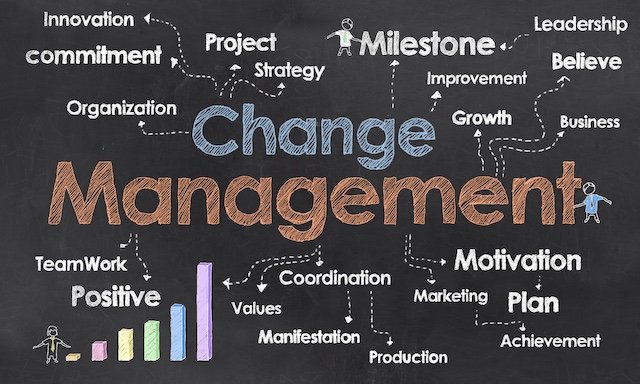Motivated employees propel every successful organization. They thrive when their efforts are recognized and their workplace supports a healthy work-life balance. Research from McKinsey shows that employees with a positive experience are 16 times more engaged and eight times more likely to remain with their employer.
However, creating a great employee experience (EX) goes beyond words or promises. It’s about intentional, empathetic design that focuses on employees’ needs, including trust, purpose, and flexibility. This includes examining every stage of their journey—hiring, daily work, and career development—and finding ways to improve these moments. A thoughtful approach to EX results in happier, more motivated teams who feel valued and supported.
We’ll show you practical ways to keep employees excited and explain why creating a great workplace really matters.
Why Is It Important for Managers to Keep Employees Motivated?
Motivated employees contribute to greater profitability and engagement, reduction in absenteeism, and less attrition.
Performance and productivity
When employees are invested in the outcomes of their work, they work harder and often achieve better results. They are more likely to take initiative, put in extra effort, and stay engaged with their tasks, leading to higher productivity and a stronger commitment to their jobs.
Goal alignment
Motivated employees can see how their work contributes to the company’s business objectives. Understanding their role in the bigger picture helps them stay focused and dedicated, creating a team that works together to achieve shared objectives.
Employee satisfaction and retention
Motivation plays a big role in keeping employees happy. Workers who feel motivated enjoy their jobs more and are less likely to leave. Retaining experienced staff reduces the time and money spent on hiring and training new employees.
Adaptability and innovation
Motivated employees are more open to change and ready to take on new challenges. They bring fresh ideas, solve problems creatively, and work well with others—qualities that are essential in today’s fast-paced business world.
Positive work culture
A motivated team helps create a supportive and collaborative workplace. Motivated employees tend to help each other, work well together, and take initiative, building a friendly and enjoyable environment that attracts talented individuals.
Cost reduction
Motivated employees save the company money. They are more efficient, make fewer mistakes, and require less supervision. Lower turnover and fewer absences resulting from job satisfaction and better work-life balance also mean the company spends less on hiring and training.
Enhanced company reputation
Motivated employees often speak highly of their workplace, boosting the company’s reputation. A positive image helps attract talented employees, loyal customers, and potential investors, contributing to the company’s long-term success.

What Motivates Employees?
Before diving into what contributes to employee motivation, let’s understand what it truly entails.
Motivation provides the answers to key questions about workplace behavior, such as:
- Why does someone take action?
- How do they get started?
- What keeps them moving forward?
- How do they accomplish their goals?
Types of Motivation
Extrinsic motivation
Extrinsic motivation is the drive to handle a task or engage in a behavior based on external factors or rewards. These are incentives that come from outside the individual and are typically controlled by others. Extrinsic motivators can be either positive (rewards) or negative (avoiding punishment).
Key characteristics of extrinsic motivation include:
- Driven by external rewards or consequences
- Often tangible or measurable
- Can be easily manipulated by others
- May lead to short-term behavior changes
Intrinsic motivation
Intrinsic motivation is the drive that comes from the individual’s internal rewards or personal satisfaction. It’s the natural tendency to seek out challenges, explore one’s interests, and pursue growth without external pressures or rewards.
Key characteristics of intrinsic motivation include:
- Stems from personal interest, enjoyment, or values
- Leads to deeper engagement and satisfaction
- Often results in higher-quality work and creativity
- Tends to be more sustainable long-term
- Closely tied to personal growth and fulfillment
Both types of motivation can be effective. However, intrinsic motivation is more powerful and sustainable in the long run.
Effective managers often strive to create environments that foster both extrinsic and intrinsic motivation, recognizing that different factors may drive different individuals at different times.
10 Ways to Motivate Employees at Work
1. Set clear and attainable goals
Setting SMART (Specific, Measurable, Achievable, Relevant, Time-bound) goals provides employees with a clear direction and purpose. When employees understand what’s expected of them and how their work contributes to the bigger picture, they’re more likely to stay motivated. Regular check-ins and progress updates help maintain focus and allow for adjustments as needed.
Example: A marketing team at a startup sets a SMART goal to increase website traffic by 10% within three months through content marketing. The clear objective energizes the team, leading to innovative ideas and collaborative efforts. They achieve the goal ahead of schedule, boosting morale and setting the stage for more ambitious targets.
2. Recognize and reward achievements
Acknowledging employees’ hard work and accomplishments helps maintain motivation. Recognition can come in different forms, from verbal praise and public acknowledgment to tangible rewards like bonuses or extra time off. Regular recognition reinforces positive behaviors and encourages continued high performance. It also fosters a culture of appreciation, where employees feel valued for their contributions.
Example: A software development company implements a monthly “Code Champion” award. When a junior developer receives the award for optimizing a critical algorithm, the recognition boosts her confidence and motivates the entire team to strive for excellence in their coding practices.
3. Promote work-life balance
Flexible working hours, remote work options, and generous paid-time-off policies demonstrate that the company values employees’ personal lives. This approach reduces burnout, increases job satisfaction, and often leads to higher productivity during work hours. Employees who feel their personal needs are respected are more likely to be engaged and committed to their work.
Example: A consulting firm introduces “Flexible Fridays,” allowing employees to work from home or adjust their hours on Fridays. This policy results in happier employees who report feeling more refreshed and productive throughout the week, leading to improved client satisfaction scores.

4. Provide opportunities for growth and development
Offering training programs, workshops, mentorship opportunities, and support for further education shows employees that the company is committed to their long-term success. Hiring from within and developing employees into organizational leaders also instills loyalty. Employees who know that growth within the organization is possible and encouraged are more likely to stay motivated and engaged.
Example: An IT company sponsors an employee to attend an advanced cybersecurity certification course. Upon completion, the employee applies new strategies that significantly enhance the company’s security protocols, earning a promotion and inspiring colleagues to pursue similar development opportunities.
5. Foster open communication
Creating an environment where employees feel psychologically safe and comfortable sharing ideas, concerns, and feedback is crucial for motivation. Regular team meetings, one-on-one check-ins, and anonymous feedback channels encourage open dialogue. This transparency builds trust, helps address issues promptly, and makes employees feel heard and valued.
Example: A manufacturing plant implements a monthly “Town Hall” meeting where employees can directly ask senior management questions. This leads to adopting several employee-suggested efficiency improvements, boosting both productivity and morale.
6. Encourage teamwork and collaboration
Team projects, cross-departmental initiatives, and collaborative problem-solving sessions foster a sense of community and shared purpose. When employees feel they’re part of a team working towards common goals, it enhances their commitment and motivation. Collaboration also leads to innovative solutions and a more dynamic workplace.
Example: A retail chain forms cross-store teams to compete in a customer service improvement challenge. The initiative not only results in a 15% increase in customer satisfaction scores but also strengthens inter-store relationships and employee engagement.
7. Offer competitive compensation and benefits
While not the sole motivator, fair and competitive compensation is fundamental to employee motivation. Regular salary reviews, performance-based bonuses, and comprehensive benefits packages show employees that the company values their contributions.
Example: A tech startup implements a transparent salary structure and quarterly performance bonuses. This clarity around compensation motivates employees to exceed goals, resulting in a 25% increase in overall company performance within the first year.
8. Create a positive work environment
A positive company culture significantly impacts employee motivation. This includes physical aspects like comfortable workspaces and amenities and cultural elements such as celebrating successes, promoting work-life balance, and fostering positive relationships among colleagues. A pleasant work environment reduces stress and makes coming to work more enjoyable, increasing motivation and productivity.
Example: An advertising agency redesigns its office to include collaborative spaces, quiet zones, and a relaxation area. The new environment sparks creativity, improves teamwork, and results in a 30% increase in successful pitch presentations to clients.
9. Provide autonomy and trust
Giving employees autonomy in their roles shows trust in their abilities and judgment. This freedom to make decisions and manage their work fosters a sense of ownership and responsibility. Autonomous employees are often more creative, efficient, and motivated to excel. It also demonstrates the company’s confidence in its workforce, further boosting morale and commitment.
Example: A customer service department allows representatives to decide on refunds up to a certain amount without managerial approval. This autonomy leads to faster resolution times, improved customer satisfaction, and increased employee job satisfaction scores.
10. Align work with personal values and interests
Connecting employees’ work to their personal values and interests can be a powerful motivator. This might involve tailoring assignments to match individual strengths and preferences or highlighting how the company’s mission aligns with employees’ personal beliefs. Employees who feel their work is meaningful and aligns with their values are more likely to be intrinsically motivated and committed to their roles.
Example: An environmental non-profit allows employees to dedicate 10% of their work time to personal passion projects related to the organization’s mission. This initiative leads to the development of an innovative recycling program, boosting employee satisfaction and the non-profit’s impact.
How Do You Motivate an Unmotivated Employee?
As a direct manager, motivating an unmotivated employee requires a personalized approach. Start by having an open, non-judgmental conversation to understand the root cause of their disengagement. It could be personal issues, lack of challenge, or unclear expectations. Once identified, work together to create a plan addressing these concerns.
Provide clear goals, offer additional training if needed, and consider assigning projects that align with their interests and strengths. Regular check-ins and feedback are crucial to track progress and make adjustments. Remember to recognize and celebrate small wins along the way. Sometimes, a change in responsibilities or team dynamics can reignite an employee’s passion and commitment.
Conclusion
Motivating employees is a crucial part of effective management and organizational success. Managers can greatly increase employee engagement and productivity through a combination of strategies such as setting clear goals, recognizing achievements, promoting work-life balance, and fostering a positive work environment.
Looking for programming to foster a culture of growth? INTOO offers a full range of motivating options, including career coaching, leadership development training, and employee training and workshops. Contact us to learn more.











